Now that we've gone over the most basics of shots and touched on camera placement, lets dig deeper into staging. Below is an example of a two characters using a different viewing plane for each shot:
Deep space
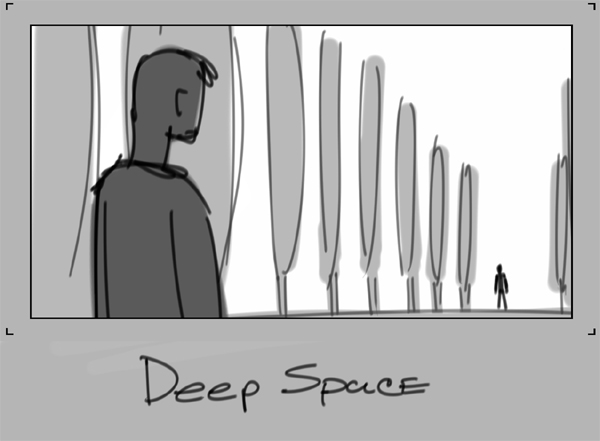
Most Directors use deep space staging. We see things in three dimensions and are used to deep space, it is most familiar to us. The difference in size of the characters tell us one is close, one is far. Using these types of visual cues you can create the illusion of deep space.
Flat Space
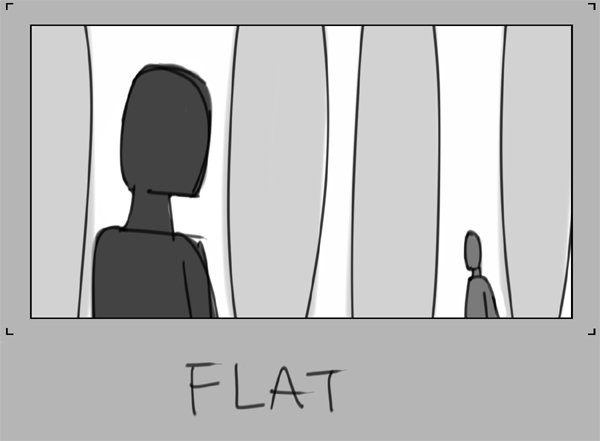
Flat space is good for comedy.
Symmetry
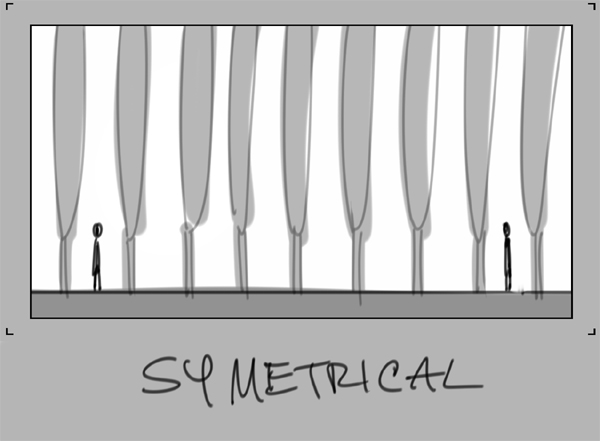
Symmetrical is good for very graphic shots. It intrigues the eye when used in contrast with the other staging methods.
Asymmetry
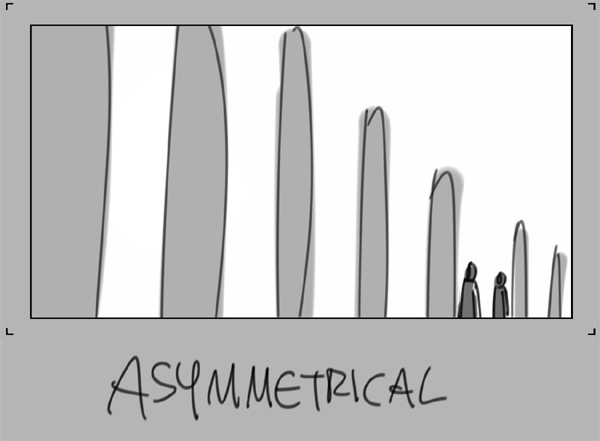
Asymmetrical lends it self to good composition. Pile all or most of the characters in one side of the frame.
Here's a few examples:
Action is much more dynamic is Deep Space. Suppose you are boarding a chase:
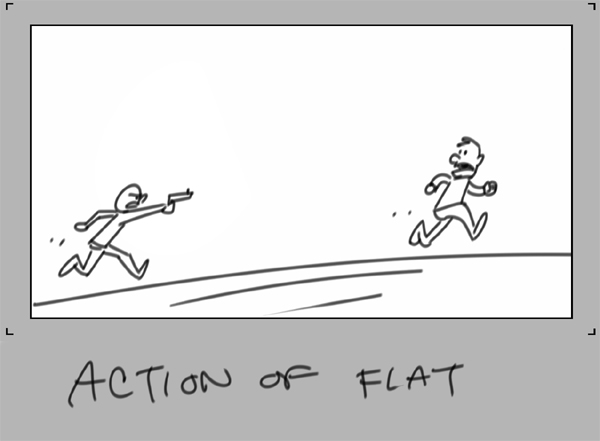
If you'd boarded it in Flat Space it would not be very compelling. Take the same action, add some perspective and you get something much better:
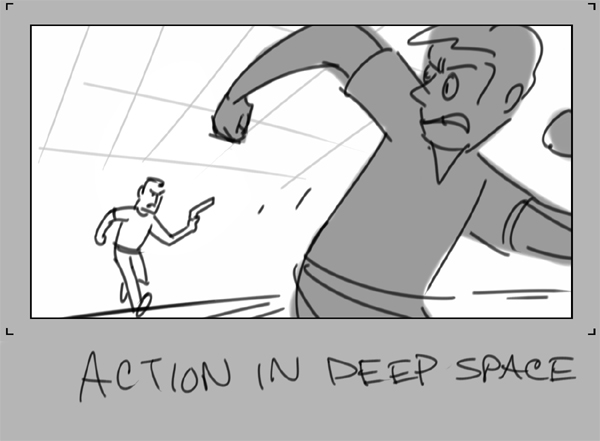
Kung Fu Panda is an action movie. Most of it is shot in Deep Space. Occasionally it is punctuated with a Flat Space shot. It can be very dramatic:
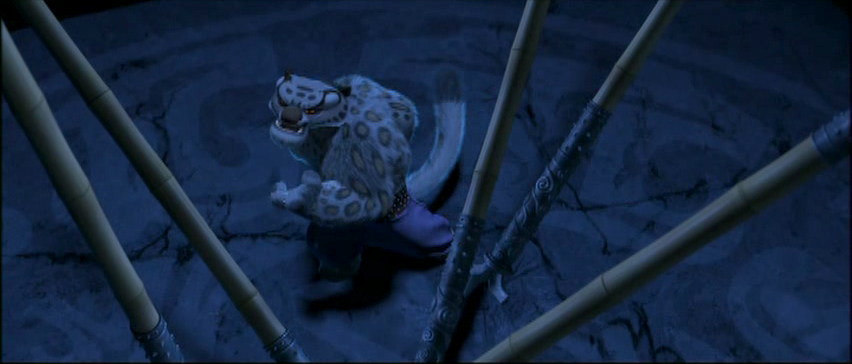
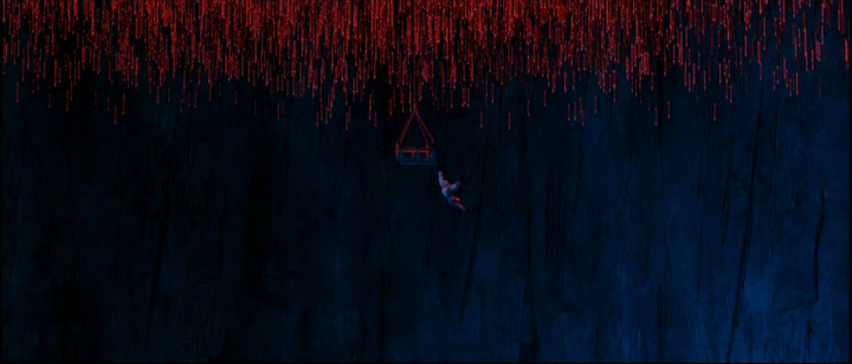
It's okay to use Flat Space, but use it for specific reasons. Or if you're Wes Anderson, shoot a whole movie with it!
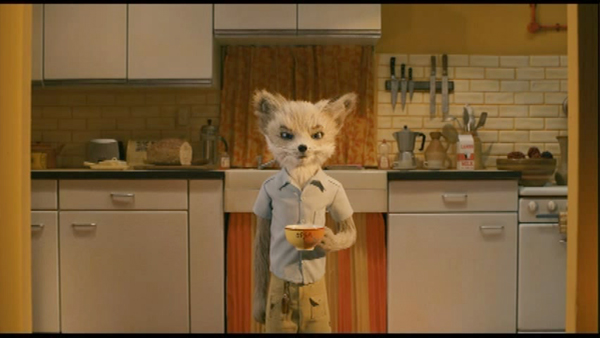
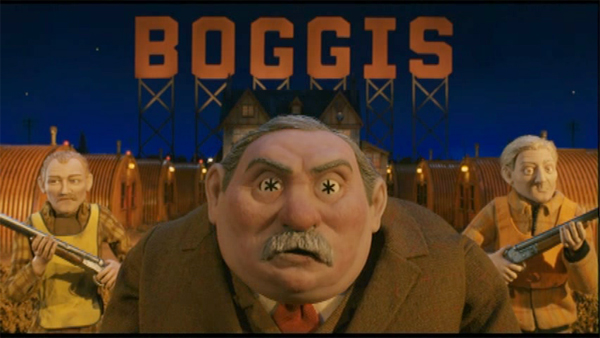
Kubrick used a one point perspective in The Shining:
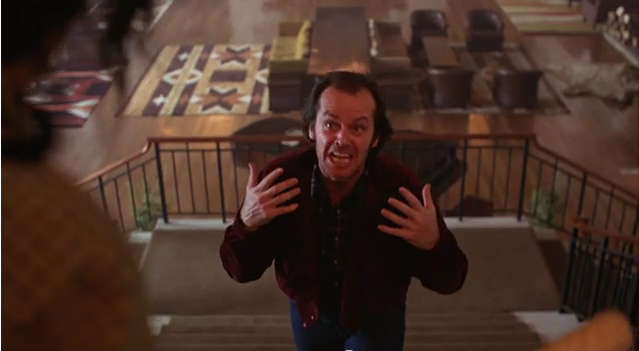
Downright creepy! Take a look at a few scenes from The Shining and you see most of the time the character is in the middle of the frame.
Comedy comes out very clear with flat staging.
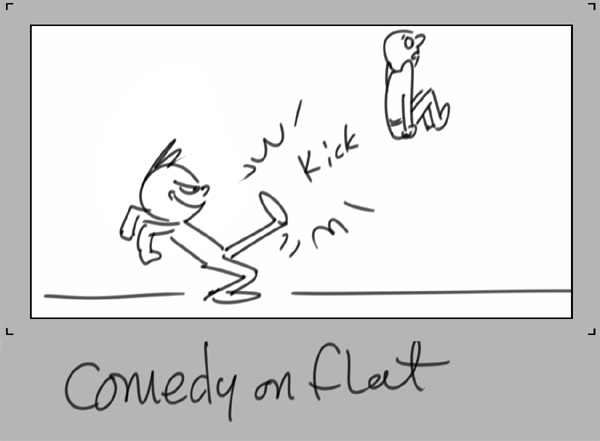
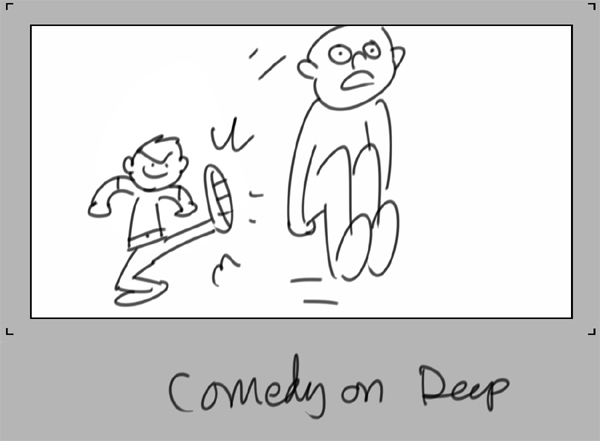
Comedy isn't as clear in Deep Space. Below is another way to draw attention to your character:
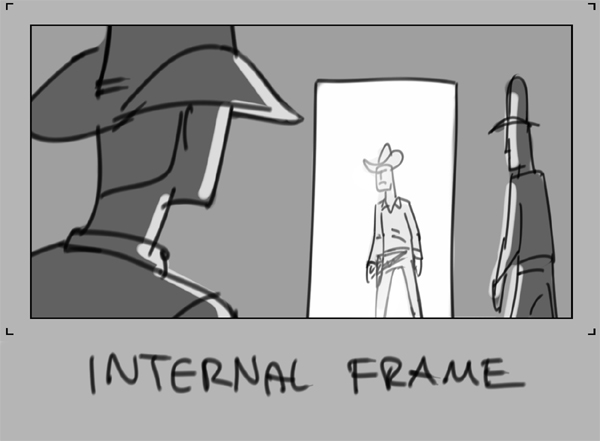
By putting a frame around a character you can draw attention to it. Just about anything will work -- doors, windows, walls, shadows. Get creative!
Arranging your characters in asymmetry can enforce and idea. Here, we are showing opposition to the main character:
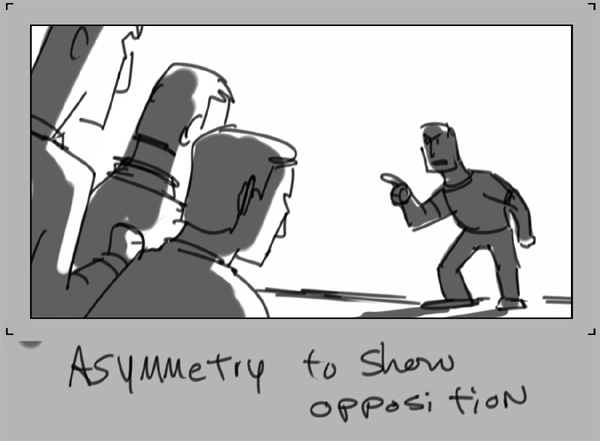
Whichever character or group of characters have the the most screen real estate is the dominant one. you can use that to emphasize a story point.
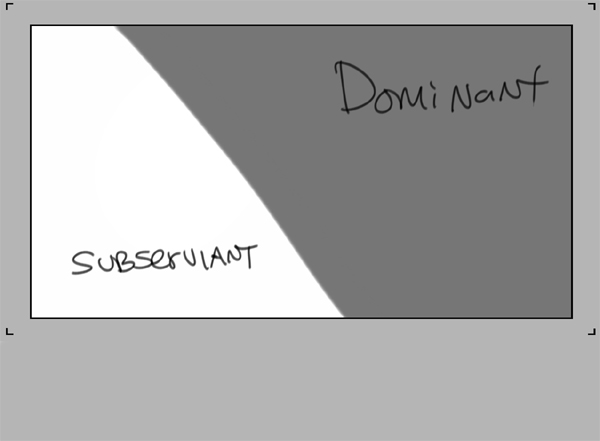
You want to please the audience's eye with interesting shots that tell your story in the most effective way. Don't be arbitrary when using different camera placements, or staging styles. Make sure you have a specific reason for each decision.
Big character, small character. One is in charge telling the other what to do. Use a combination of shots, deep, flat, asymetrical etc to make your assignment visually interesting.
Take a look at the scene between Mr Incredible and Mr Huph. Little guy telling big guy what to do. There is a combination of deep space and flat space going on there. See if you can understand why. Foghorn Leghorn and the chicken hawk is another good example of big /little.